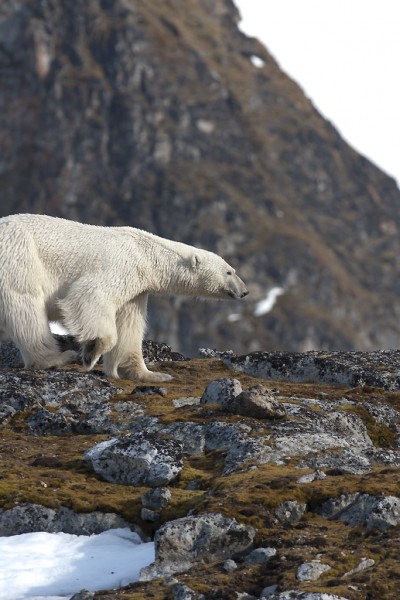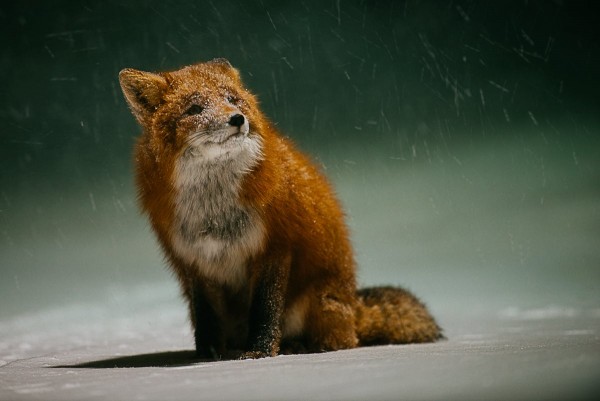Cold weather is coming back real quick now, but this is no reason to stop shooting photos. I’d rather go under the hot sun of Africa, but Winter lights and the low light of high latitudes (Arctic, Antarctica or even Scandinavia) allow so lovely pictures that I would prefer taking some more photos.
But cold is rather an ennemy for our photo gear (and for photographers). So, here are a few of the tips and tricks I collected from photographers really used to this situation and who accepted to share them with me (and you).
Gear
Normal operating temperature of most cameras is between 0°C and 35°C. Most of them would probably keep working under 0°C, but they would be more exposed to the risk of locking down. Pro cameras have a much wider range (their cost is also much larger) but even they need to be taken care of.
Acclimatization
Avoid going directly from a hot car to the low external temperature (or worse, bringing back to heat a camera which just spent fifteen minutes at -30°C) without a very smooth transition. Keep your gear in a bag during long minutes (usually half an hour is enough) in a bag which will slow down the transition as much as possible.
Some products are designed specifically for that purpose (to protect and to allow easy manipulation during those transition phases):
You want to avoid condensation as much as possible (short-circuits can easily damage the best electronics) or frost (which will glue mechanisms). Beware of flash lights which are more sensitive because of high voltages used inside their electronics.
When temperatures are really low or for ease of use, you can leave all your gear (except batteries) in the permanent cold. Just be sure to avoid humidity and, if you are in more “civilized” areas, to keep it out of sight.
If condensation happens, don’t wait: Remove the battery, remove the lens and let it all breathe and dry, avoiding humid places. Limit all mechanical handling (don’t play with this lens rings) and keep the batteries out until the last trace of humidity is gone for sure. With no electricity, there are very very few risks of permanent damage.

Rain or snow
From all that precedes, you have understood that you don’t want to expose your gear to rain or snow or sleet, when it’s cold. Anything protective will be good. Even a plastic bag attached with gaffer scotch tape will protect your camera and lens.
Battery
Now, go buy some more spare batteries. In cold weather, their autonomy drops down to ridiculous levels. You will need to switch them often. So, you need a stock.
But the best to keep them working is keep them warm: Inside your own clothes (not inthe external pockets, of course). Just draw it out when needed. Even if you need to do that quite often.
(and don’t forget to have enough chargers -or enough charging time- to bring three times more batteries than ususal; Keep charging).
Lenses
To avoid humidity, just avoid swithing lenses. All the more, if you are outside and it is snowing…
Photography
The photographer must stay warm
OK! Maybe not warm, but not too cold. And confortable enough not to shiver (this would blur the shots 😉 ). You will do nothing good if you are frozen. Start by getting advice from people from the region, follwo their advice. And start with:
- For Winter clothes, several layers are better than one.
- Since you may have to move from one temperature to another, you must be ready to adapt quickly (add or remove layers).
- Don’t go too far: Avoid sweating; It would only reduce the efficiency of the best technical clothes.
But remember two important factors:
- Most photographers move very little; Most sports-oriented recommendations must be adapted (less phyiscal exertion means less heat produced by the body).
- In case of wind, if you can’t find a proper shelter (e.g. when stalking an animal), the effects of cold are amplified quickly and you need added protection.

Gloves
Try and handle little buttons either with frozen fingers or with mittens… My recommendation:
- A first layer of silk mini-gloves (very thin, very confortable and quite isolating)
- On top of them, you’ll put the thickest gloves you can buy if you find them practical to handle the camera. Don’t be shy! Bring your camera to the clothes store. Or use the gloves to handle the buttons on the side of your smartphone. You’ll be a good judge of what is OK or not.
- Possibly, buy very thick gloves but cut the forefinger to allow the finger out. Not elegant, but efficient. And, there comes the advantage of a silk glove inside.
Silk gloves tend to tear down easily, but they cost near to nothing. So, find a bargain sale and buy several pairs.
Bag
More than ever, you want a bag that is easy to open and close (even with mittens) and easy to handle (even over thick clothes).
Plan ahead
You will have less opportunities to fail or miss. So, plan ahead. Prepare for all. Think about the photos you want to shoot and choose your gear for that. Choose your focal length. Choose sensitivity. Choose your clothes.
Before you leave.
Experiment
In Winter, most subjects are slower. It’s time to experiment. Change speed and aperture. change sensitivity. Change your frame.
Expose
Light can be tricky, so, if you think you can handle it, go RAW to have more correction possibilities for an imperfect exposure.
On snow, you may have to over-expose to keep a white surface despite the camera computer trying to make it look dull and grey. 1 stop. Sometimes 2. Check the histogram if your camera can display it. Or use exposure bracketing (e.g. 3 or 5 shots with 1/2 stop spaces).
Since it may be very difficult to correctly judge images on a small LCD, never delete an image in the field. This is better done in front of your computer screen.
Correct
Back on the computer, you will choose the best exposed shot (where there is no burnt white lights, no black shadows) and you may correct it slightly to your taste.
If your pictures appear quite dull, think about pushing the blacks a little. Sometimes a little added contrast may do wonders, but remember that Winter is made of low contrasts on white surfaces.
Watch
Look for your subject, but don’t forget your footsteps in the snow. Maybe, you need to plan where you’ll be walking? Again, plan ahead.
Remove snow
A few snow flakes may be photo-bombing your best shot. Remember that you always can use a slow speed and a tripod to hide a few of them.
And some personal pleasure!
Don’t forget a little comfort: Bring a vacuum bottle filled with a hot drink. There’s nothing better to improve poor morale when it’s cold or when the light does not want to be right.
